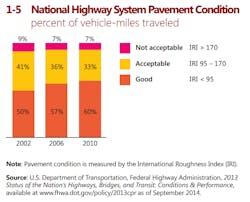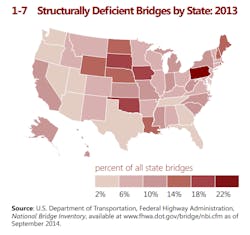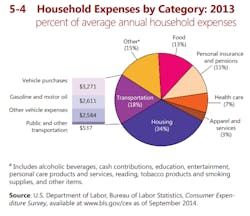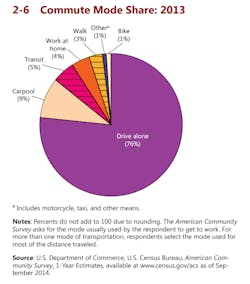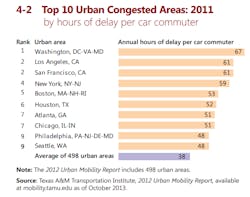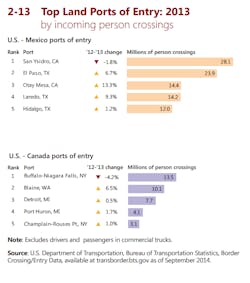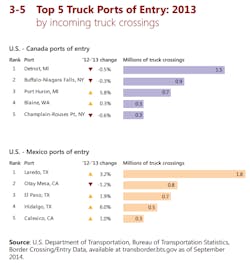So, how do you the think you did on the First-Ever American Trucker Transportation Trivia Quiz (FEATTTQ)? Our little exercise in semi-professional self-education is based on the 2015 Pocket Guide to Transportation by the U.S. Dept. of Transportation’s Bureau of Transportation Statistics. Take the quiz here if you haven’t already.Now for the answers.
1. B. There are 4 million (3,966,485, to be precise) miles of public highways in the U.S. I have no idea what I would’ve guessed without multiple choice options.
2. A. Surprisingly, only 7% of the pavement in the National Highway System is in “not acceptable” condition. I would’ve said more – but all it takes is a few bad miles on a major Interstate to really screw things up.
3. A. is the answer, but the top three states with the most structurally deficient bridges were the choices. Pennsylvania, Iowa and South Dakota all had 1 bridge out of every 5 or so assessed to be in such shape. Nationally, however, the number has been falling for more than 20 years.
4. A. As a percentage of GDP, transportation is a larger part of the U.S. economy than education, and nearly equal to food.
5. All of the above. As a percentage of household expenses, Americans spend more on transportation (18% of the budget) than on food, health care and clothing, to say nothing of the “other” category which includes booze, tobacco, entertainment and education. Housing is the biggest piece of the personal budget pie.
6. B. More than 3 out of 4 Americans typically drive to work alone, way more than those who carpool, take transit, walk, or bike. Thus, rush hour.
7. A. Washington, DC (including its Virginia and Maryland approaches) is the most congested urban area in the U.S., in terms of annual hours of delay per commute, followed by B and C, Los Angeles and San Francisco.
8. A. Twice as many people make incoming crossings from Mexico though the busiest U.S. land port of entry, San Ysidro, CA compared to Buffalo/Niagara Falls, NY, the busiest incoming location for crossings from Canada. If you’ve ever been stuck waiting to get through at San Ysidro, you probably thought the ratio was much higher.
9. B. Canada has the most incoming truck crossings, although the gap has been narrowing since 2003. Trucks to Cuba? Not entirely the dumb wrong answer it might seem. Big rigs move by ferry between Scandinavia and the rest of Europe all the time. We’ll see.
10. A. Laredo, TX is the busiest truck port of entry, but not by much – not a surprise if you’ve been across the bridge at Detroit.
11. C. As trucking advocates proudly point out, trucks haul nearly three-quarters of freight within the U.S., by value – meaning the economy moves on trucks.
12. C. As a reminder to be safe out there: 25,000 heavy-truck occupants were injured in accidents in 2012, the most recent data cited.
About the Author
Kevin Jones 1
Editor
Kevin has served as editor-in-chief of Trailer/Body Builders magazine since 2017—just the third editor in the magazine’s 60 years. He is also editorial director for Endeavor Business Media’s Commercial Vehicle group, which includes FleetOwner, Bulk Transporter, Refrigerated Transporter, American Trucker, and Fleet Maintenance magazines and websites.
Sign up for our eNewsletters
Get the latest news and updates
